It’s a digital world that we live in today. From the moment we wake up, our digital devices are by our side, and it doesn’t stop until we go to bed at night. In this digital world of ours, staying on top of trends is important for businesses to keep their place within the hearts and minds of consumers. It’s important to keep up with the latest digital marketing news and updates! In this blog post, we will discuss a few digital marketing strategies that you can use for your business.
- Create a content calendar: A content calendar is an awesome way to stay organized with what you want to publish on social media or share through email campaigns. It also helps make sure there is always something new coming from your company!
- Share testimonials: Adding customer testimonials to your website or using them in email newsletters is one of the easiest ways increase conversion rates without spending anything.
From advertising on social media platforms, to creating content that will keep consumers coming back, there are plenty of ways to take advantage of this powerful tool. Now it’s up to you! Which methods have you used in the past? Read on as we continue sharing insights into how businesses can use digital marketing techniques effectively!
B2B Marketing News: Marketer Optimism Soars, LinkedIn’s Thought Leadership Impact Report, Google’s Newsletter Project, & Media Budget Trends


What New Approaches Are B2B Execs Taking with Their Nurture Programs?
49 percent of B2B marketing sales and technology executives say they’ve started using content engagement data, with 44 percent having begun using account-based nurturing, while some 37 percent say that they’ve started using intent data, according to recently-released survey data exploring new approaches to B2B lead nurturing. MarketingCharts
Where Are Media Budgets Trending for Next Year?
A net 76 percent of marketers plan to expand their media budget for digital video during 2022, representing the top area of media expansion planned for next year, followed by branded content by influencers at 71 percent and social media story ads at 70 percent — one of several statistics of interest to B2B marketers contained in recently-released survey data. MarketingCharts
More information on how Google generates titles for web page results
Google’s Search Central online developer community has released updated guidance on some of the sizable array of elements it considers in pulling together search result page titles — including traditional title tags, half-empty, obsolete, inaccurate, and micro-boilerplate titles, the search giant recently announced. Google Search Central

https://www.toprankblog.com/2021/09/b2b-marketing-news-092421/
Google Can’t See Content Behind Captchas
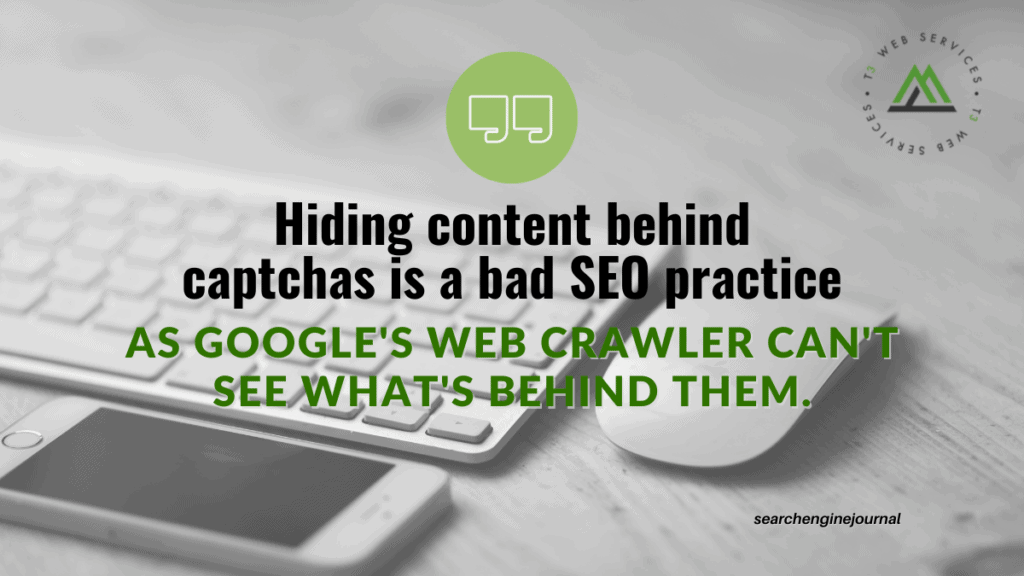

Google’s John Mueller on Captchas That Block Content
Mueller makes it clear that Googlebot doesn’t fill out captchas — even Google-based captchas.
If the captcha has to be filled out before accessing the content, then the content won’t get crawled.
Google will be able to index the page, but none of the content behind the captcha will be used for ranking.
“Googlebot doesn’t fill out any captchas. Even if they are Google-based captchas we don’t fill them out. So that’s something where if the captcha needs to be completed in order for the content to be visible, then we would not have access to the content.
If, on the other hand, the content is available there without needing to do anything, and the captcha is just shown on top, then usually that would be fine.”
As Mueller says, you can safely use captchas if the main content is readily accessible.
To be sure that a captcha isn’t blocking Google’s view, Mueller recommends using the Inspect URL tool in Search Console.

https://www.searchenginejournal.com/google-cant-see-content-behind-captchas/421202/
How to Create Facebook In-Stream Ads People Will Watch
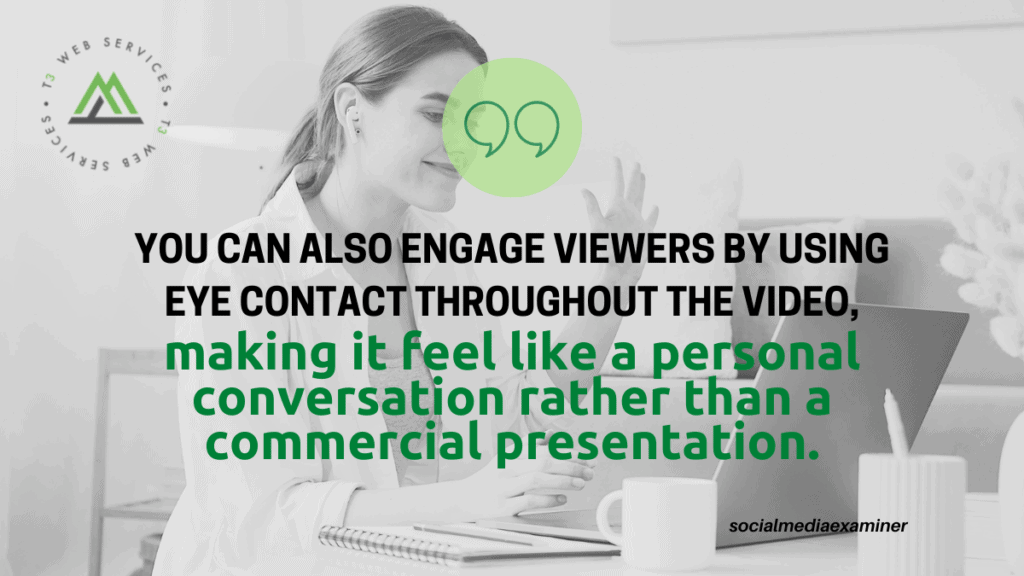

Start Strong
The first 3 seconds of an in-stream ad are the most important. That’s when viewers decide to watch or skip.
So your ad needs to make an instant impact. Use colors, sound, and movement to grab viewers’ attention and attract their interest.
Create a Distinctive Look
Facebook in-stream ads have to stand out in two ways: they have to be different from other ads and they have to be different from the surrounding content. You’ll need to use all of the tricks at your disposal to create a distinctive look:
- Show your brand logo immediately.
- Use brand colors and fonts for a clear visual identity.
- If targeting viewers who already know your brand, try using an established script structure.
Give a Simple Call to Action
Even though in-stream ads can be a full 10 minutes long, you still need to keep things simple. Whatever your goal for the campaign, you want to convert users with a single tap. Use the primary text, URL, and video content to make the call to action as clear as possible.
Use Large Print
Facebook’s research suggests that viewers respond well to video ads with big, clear text. Think big enough to read on mobile (and remember, not everyone has the latest enormous iPhone). If you use text in your in-stream ads, keep it short, simple, and sizeable.

https://www.socialmediaexaminer.com/how-to-create-facebook-in-stream-ads-people-will-watch/
Google Local Filler Content Isn’t Good UX, and Needs Revisions
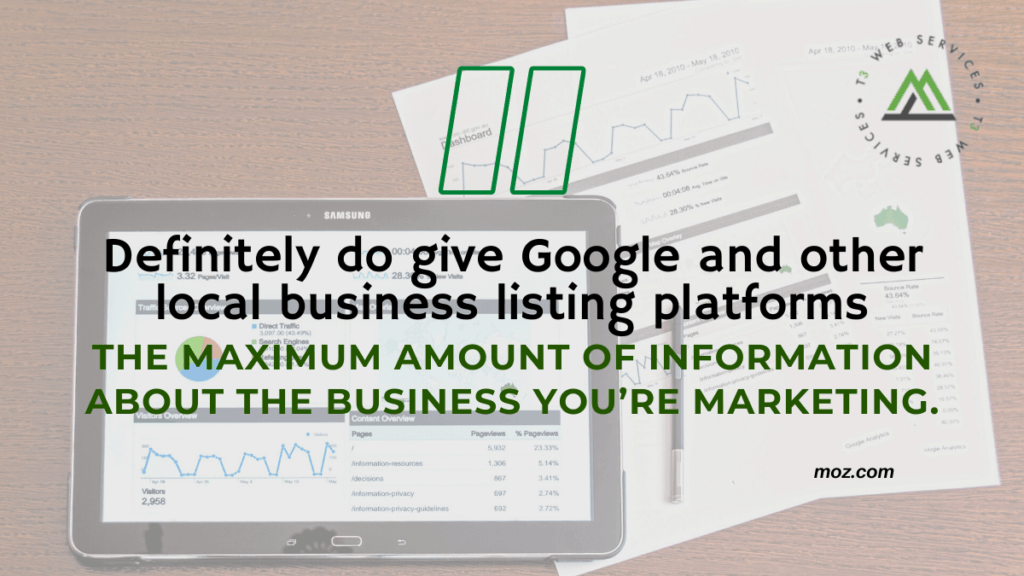

What should you do if a local business you’re promoting is getting lost amid filler listings?
SEO is going to be the short answer to this problem. It’s true that you can click the “send feedback” link at the bottom of the local finder, Google Maps or an organic SERP, and fill out form like this, with a screenshot:
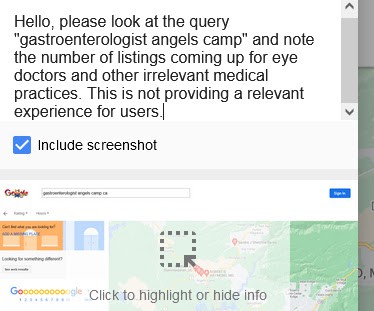
More practically-speaking, if a business you’re promoting is getting lost amid irrelevant listings, search engine optimization will be your strongest tool for convincing Google that you are, in fact, the better answer. In our study, we realized that there are, in fact, no GI docs in Angels Camp, and that the nearest one is about fifteen miles away. If you were in charge of marketing this particular specialist, you could consider:
1. Gaining a foothold in nearby towns and cities
Recommend that the doctor develop real-world relationships with neighboring towns from which he would like to receive more clients. Perhaps, for example, he has hospital privileges, or participates in clinics or seminars in these other locales.
2. Writing about locality relationships
Publish content on the website highlighting these relationships and activities to begin associating the client’s name with a wider radius of localities.
3. Expanding the linktation radius
Seek relevant links and unstructured citations from the neighboring cities and towns, on the basis of these relationships and participation in a variety of community activities.
4. Customizing review requests based on customers’ addresses
If you know your customers well, consider wording review requests to prompt them to mention why it’s worth it to them to travel from X location for goods/services (nota bene: medical professionals, of course, need to be highly conversant with HIPPA compliance when it comes to online reputation management).

https://moz.com/blog/google-local-filler-content-needs-revision
5 Fresh Features: What LinkedIn’s New Learning Hub, Ratings & Reviews, Live Events & Page Article Updates Mean for B2B Marketers
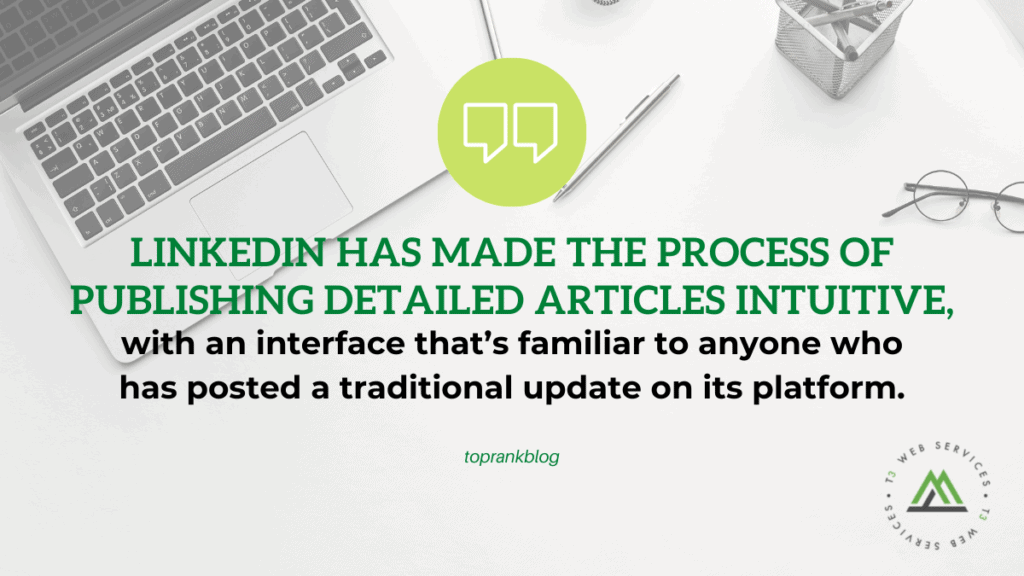

1 — Publish Long-Form Content Using Page Articles
LinkedIn has launched a new feature that gives company pages the ability to share long-form content on the professional social platform.
Unlike personal LinkedIn accounts, until this addition business pages had faced a limit in the length of the material that could be organically posted.
2 — Share Customer Praise With Ratings & Reviews
LinkedIn also recently began offering review and rating features to user profiles, as part of a new more robust services profile element that can now include a range of past client reviews and ratings.
3 — Enhanced LinkedIn Live Experience
Users who have chosen to attend a LinkedIn Live event will also now receive helpful reminder messages, and LinkedIn will additionally notify certain followers of the company page hosting the event.
4 — Utilize LinkedIn Learning Hub Skill-Building Platform
LinkedIn has just launched its LinkedIn Learning Hub, a robust skill-building platform looking to expand on what is available from traditional learning experience platforms (LXPs).

https://www.toprankblog.com/2021/09/5-fresh-linkedin-features-for-b2b-marketers/
Google Ads announces machine learning-based data-driven attribution models in new privacy landscape
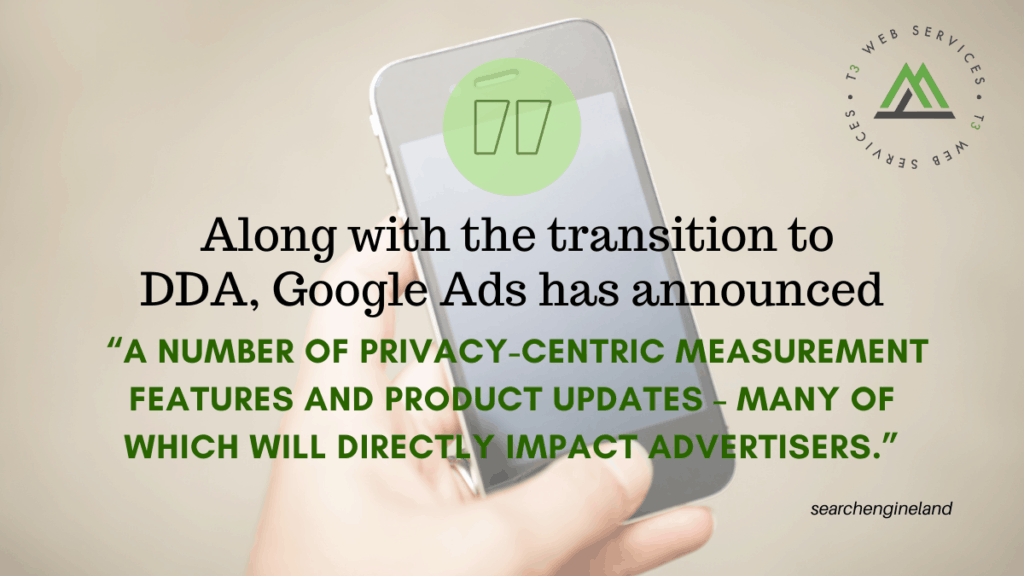

“In a move away from last-click, data-driven attribution will soon be the default attribution model for all new Google Ads conversion actions,” tweeted Ads Liaison, Ginny Marvin on Monday morning. As Google works toward a move privacy-focused search experience for users, it’s also adjusting the available attribution models for advertisers.
“[Data-driven attribution] uses advanced machine learning to more accurately understand how each marketing touchpoint contributed to a conversion, all while respecting user privacy,” according to an announcement from Vidhya Srinivasan, VP/GM Buying, Analytics and Measurement, Google Ads.
How it works. “Data-driven attribution looks at all the interactions—including clicks and video engagements—on your Search (including Shopping), YouTube, and Display ads in Google Ads. By comparing the paths of customers who convert to the paths of customers who don’t, the model identifies patterns among those ad interactions that lead to conversions,” says the about page.

The future of attribution is data-driven
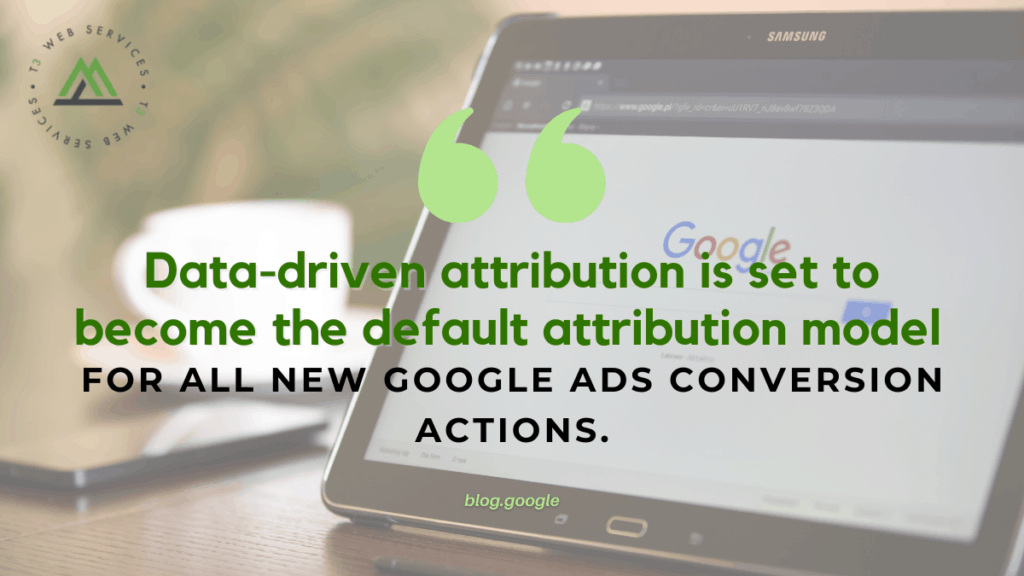
In the face of a changing privacy landscape, marketers need new measurement approaches that meet their objectives and put users first. This is why we’ve invested in new tools to help you future-proof your measurement.
One critical tool is machine learning, which can be used to fill the gaps in observed data and unlock new insights into consumer behavior. For example, conversion modeling powered by machine learning allows you to preserve measurement even when cookies or other identifiers aren’t present. Data-driven attribution in Google Ads takes this a step further. It uses advanced machine learning to more accurately understand how each marketing touchpoint contributed to a conversion, all while respecting user privacy.
https://blog.google/products/ads-commerce/data-driven-attribution-new-default/


Leave a Reply